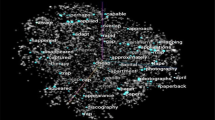Abstract
The primary objective of this paper is to develop a method by which a Deep Neural Network can be used to perform Fake News detection without implementing any complex Natural Language Processing techniques. A key element of the proposed structure consists of a data processing component that manipulates the news article data (shape, data type, etc.) in the database so that it can be used in-side a Deep Neural Network structure, without the need for additional complex NLP techniques. A Deep Neural Network model that can perform binary classification on a given set of news articles was built. The method was implemented in Python using the Jupyter Notebook framework. The algorithm has an accuracy of at least 70% on the testing data set, leading to conclusive results regarding the be-longing of the considered material to the fake news categories.
Access this chapter
Tax calculation will be finalised at checkout
Purchases are for personal use only
Similar content being viewed by others
References
Stephens, M.: A History of News, pp. 55–57, 3 edn. Oxford University Press, New York, USA (2007)
Fogg, B.J.: Stanford Guidelines for Web Credibility. A Research Summary from the Stanford Persuasive Technology Lab. Stanford University. www.webcredibility.org/guidelines. Accessed 10 Jan 2022
Bengio, Y.: Learning Deep Architectures for AI, pp. 13–18. Now Publishers, Norwell, Massachusetts, United States (2009)
Russell, S.J., Norvig, P.: Artificial Intelligence: A Modern Approach, pp. 2–55, 3rd edn. Prentice Hall, Upper Saddle River. New Jersey (2003)
Intel: The Future of AI in Agriculture. https://www.intel.com/content/www/us/en/big-data/article/agriculture-harvests-big-data.html. Accessed 10 Jan 2022
The Guardian: The superhero of artificial intelligence: can this genius keep it in check? https://www.theguardian.com/technology/2016/feb/16/demis-hassabis-artificial-intelligencedeepmind-alphago. Accessed 10 Jan 2022
Ferrucci, D., Levas, A., Bagchi, S., Gondek, D., Mueller, E.T.: Watson: beyond Jeopardy! Artif. Intell. 199–200, 93–105 (2013)
Cortes, C., Vapnik, V.N.: Support-vector networks. Mach. Learn. 20(3), 273–297 (1995)
Hosmer, D.W., Lemeshow, S.: Applied Logistic Regression, pp. 2–46, 2nd edn. Wiley Publishing (2000)
Borucka, A., Grzelak, M.: Application of logistic regression for production machinery efficiency evaluation. Appl. Sci. 9, 1–16 (2019)
Han, J., Morag, C.: The Influence of the Sigmoid Function Parameters on the Speed of Backpropagation Learning, pp. 195–201. Springer. Malaga-Torremolinos, Spain (1995)
Schmidhuber, J.: Deep learning in neural networks: an overview. Neural Netw. 61, 85–117 (2015)
Glorot, X., Bordes, A., Bengio, Y.: Deep sparse rectifier neural networks, Proceedings of the 14th International Conference on Artificial Intelligence and Statistics AISTATS, vol. 15, pp. 315–321. Montreal, Canada (2011)
Goodfellow I., Bengio Y., Courville A.: Back-Propagation and Other Differentiation Algorithms, pp. 200–220. MIT Press (2016)
Rumelhart, D.E., Hinton, G.E., Williams, R.J.: Learning representations by back-propagating errors. Nature 323, 533–536 (1986)
Goodfellow, I., Bengio, Y., Courville, A.: Deep Learning, pp. 326–339. MIT Press (2016)
Yi Tao, Z., Chellappa, R.: Computation of optical flow using a neural network. In: IEEE International Conference on Neural Networks, vol. 2, pp. 71–78 (1998)
Lawrence S., Giles, C.L., Ah Chung, T., Back, A.D.: Face recognition: a convolutional neural network approach. IEEE Trans. Neural Networks 8, 98–113 (1997)
Ciresan, D., Meier, U., Schmidhuber, J.: Multi-column deep neural networks for image classification. In: IEEE Conference on Computer Vision and Pattern Recognition, pp. 3642–3649. Institute of Electrical and Electronics Engineers (IEEE), New York, NY (2012)
Klein, D., Manning, C.D.: Natural Language Grammar Induction Using a Constituent-Context Model. Advances in Neural Information Processing Systems. Standford University California, USA (2002)
Alrehamy, H.H., Walker, C.: SemCluster: unsupervised automatic Keyphrase extraction using affinity propagation. In: Chao, F., Schockaert, S., Zhang, Q. (eds.) UKCI 2017. AISC, vol. 650, pp. 222–235. Springer, Cham (2018). https://doi.org/10.1007/978-3-319-66939-7_19
Ho Chiung, C., Baharim, K.N., Abdulsalam, A., Alias, M.S.: Deep neural networks for text: a review. In: Proceedings of the Sixth International Conference on Computer Science and Computational Mathematics (2017)
Luong, T., Socher, R., Manning, C.D.: Better Word Representations with Recursive Neural Networks for Morphology”. CoNLL, pp. 104–113 (2013)
Vlachos, A., Riedel, S.: Fact checking: Task definition and dataset construction. In: Proceedings of the ACL 2014 Workshop on Language Technologies and Computational Social ScienceLondon, pp. 18–22. United Kingdom (2014)
Amazeen, M.A.: Checking the fact-checkers in 2008: predicting political ad scrutiny and assessing consistency. J. Political Market. 15(4), 433–464 (2008)
Morgan, M., Barker, D.C., Bowser, T.: Fact-checking polarized politics: does the fact-check industry provide consistent guidance on disputed realities? Forum 13(4) (2015)
Conroy, N., Rubin, V., Chen, Y.: Automatic deception detection: methods for finding fake news. In: Proceedings of the Association for Information Science and Technology. vol. 52, issue 1 (2015)
Thota, A., Tilak, P., Ahluwalia, S., Lohia, N.: Fake news detection: a deep learning approach. SMU Data Sci. Rev 1(3) (2018)
Baker, D., Chaudhry, A.K., Thun-Hohenstein, P.: Stance detection for the fake news challenge: identifying textual relationships with deep neural nets, Stanford. https://web.stanford.edu/class/archive/cs/cs224n/cs224n.1174/reports/2760230.pdf. Accessed 11 Jan 2022
Goodfellow, I.J., et al.: Generative Adversarial Nets, Machine Learning. Universite de Montreal, Montreal (2014)
Author information
Authors and Affiliations
Corresponding author
Editor information
Editors and Affiliations
Rights and permissions
Copyright information
© 2022 The Author(s), under exclusive license to Springer Nature Switzerland AG
About this paper
Cite this paper
Avram, C., Mesaroş, G., Aştilean, A. (2022). Deep Neural Networks in Fake News Detection. In: Machado, J., et al. Innovations in Mechatronics Engineering II. icieng 2022. Lecture Notes in Mechanical Engineering. Springer, Cham. https://doi.org/10.1007/978-3-031-09385-2_3
Download citation
DOI: https://doi.org/10.1007/978-3-031-09385-2_3
Published:
Publisher Name: Springer, Cham
Print ISBN: 978-3-031-09384-5
Online ISBN: 978-3-031-09385-2
eBook Packages: Intelligent Technologies and RoboticsIntelligent Technologies and Robotics (R0)




